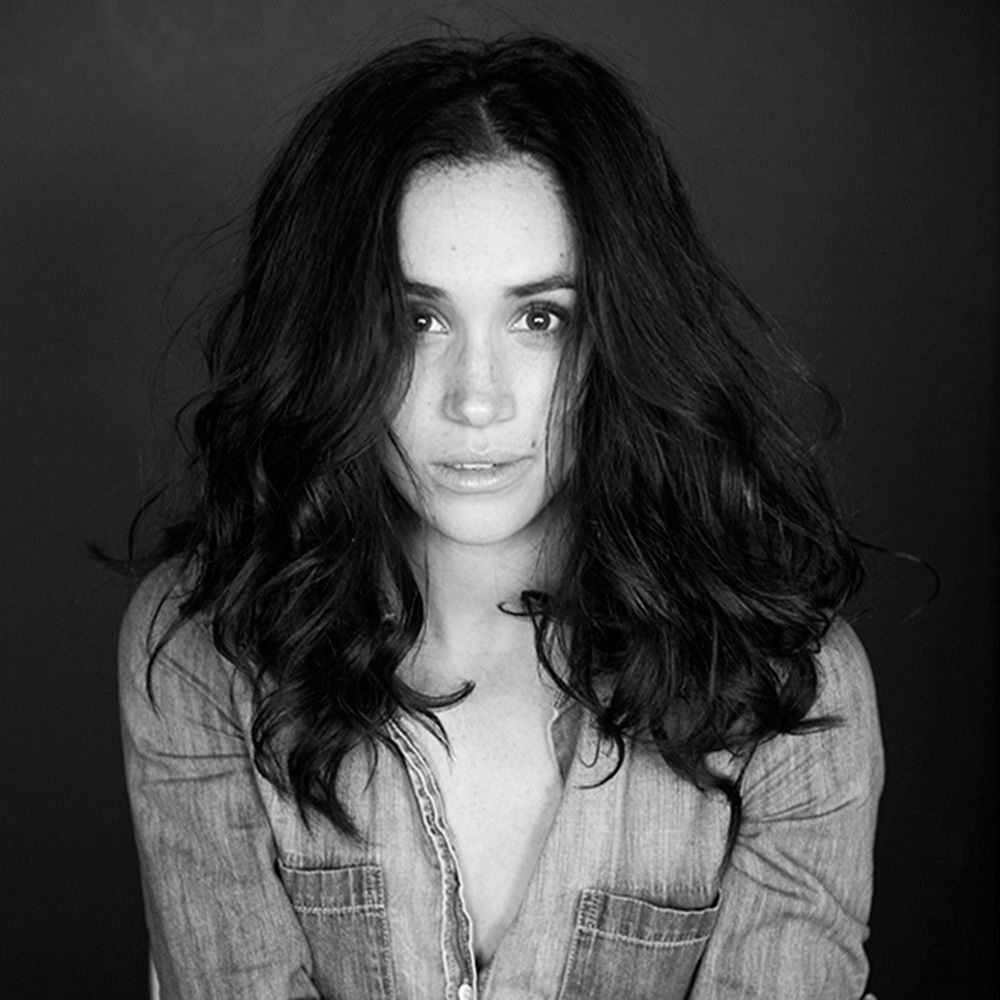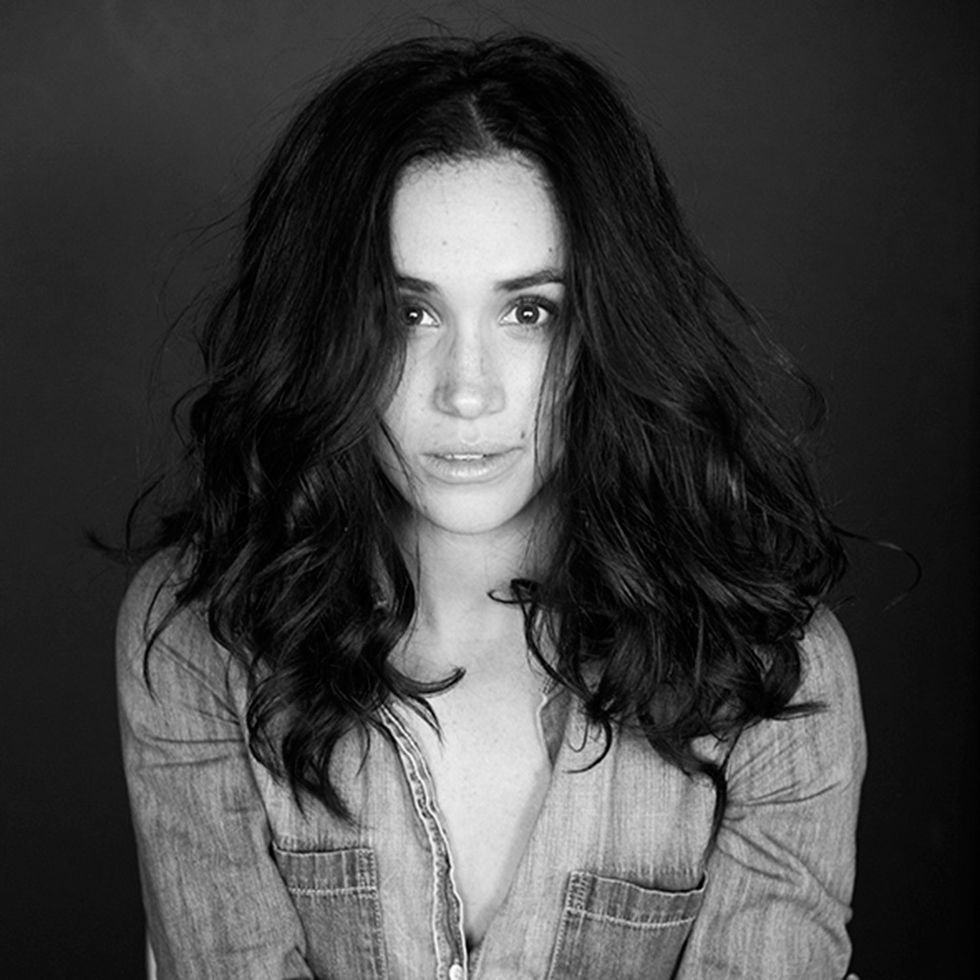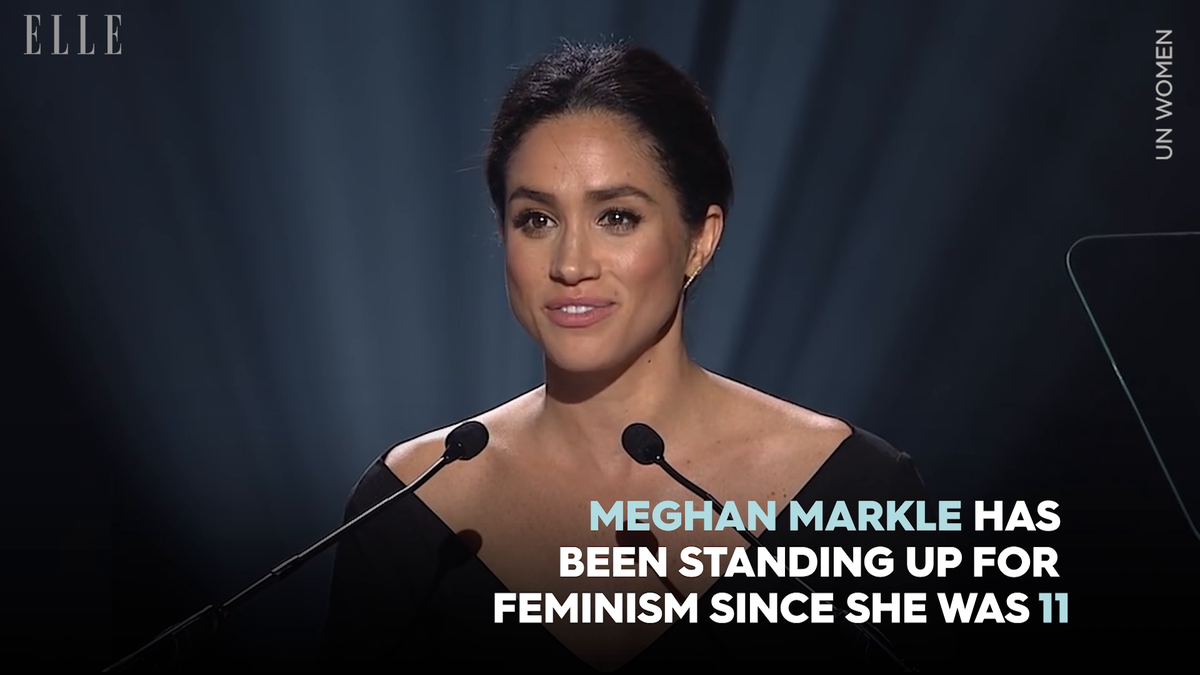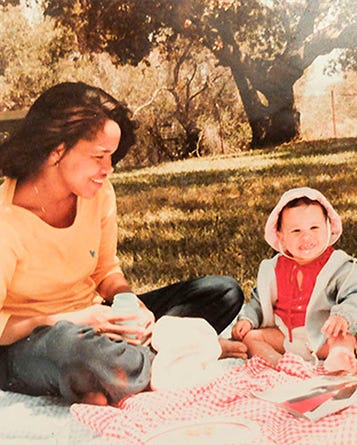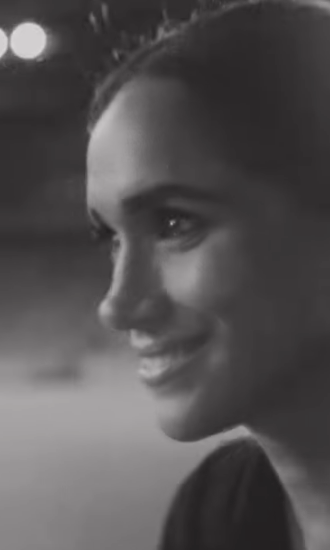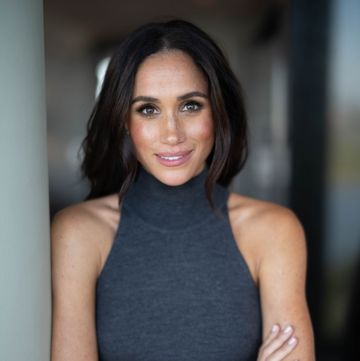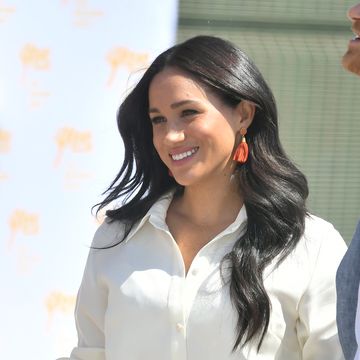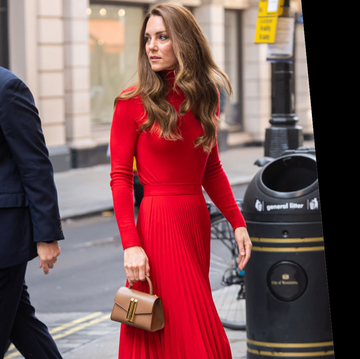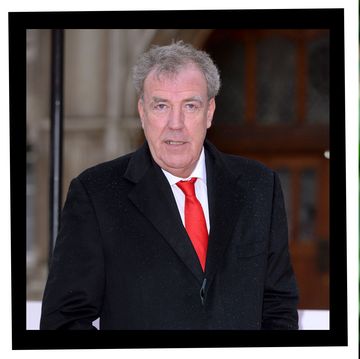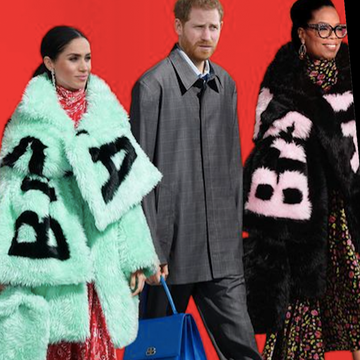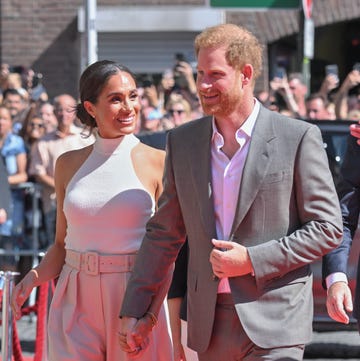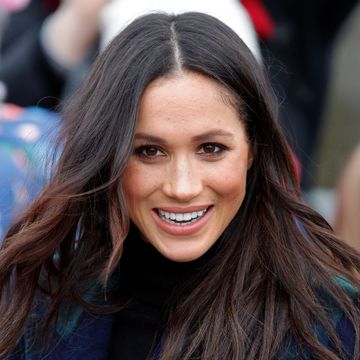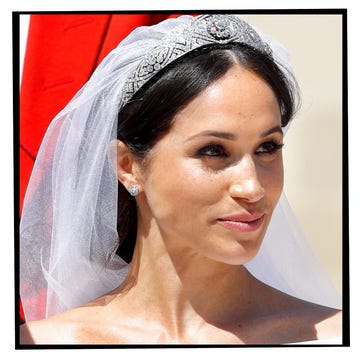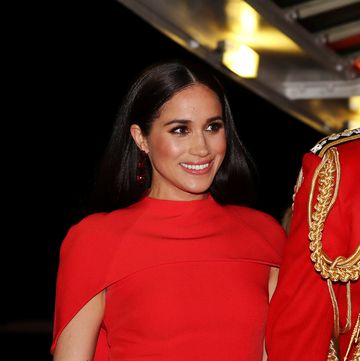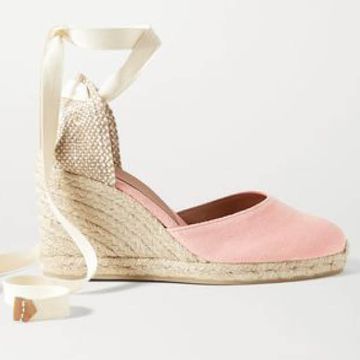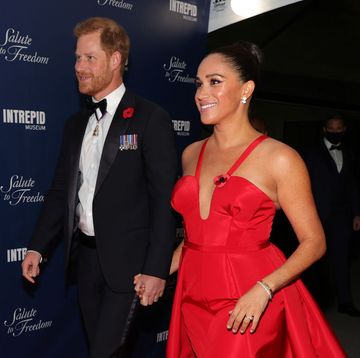'What are you?' A question I get asked every week of my life, often every day. 'Well,' I say, as I begin the verbal dance I know all too well. 'I'm an actress, a writer, the Editor-in-Chief of my lifestyle brand The Tig, a pretty good cook and a firm believer in handwritten notes.' A mouthful, yes, but one that I feel paints a pretty solid picture of who I am. But here's what happens: they smile and nod politely, maybe even chuckle, before getting to their point, 'Right, but what are you? Where are your parents from?' I knew it was coming, I always do. While I could say Pennsylvania and Ohio, and continue this proverbial two-step, I instead give them what they're after: 'My dad is Caucasian and my mom is African American. I'm half black and half white.'
To describe something as being black and white means it is clearly defined. Yet when your ethnicity is black and white, the dichotomy is not that clear. In fact, it creates a grey area. Being biracial paints a blurred line that is equal parts staggering and illuminating. When I was asked by ELLE to share my story, I'll be honest, I was scared. It's easy to talk about which make-up I prefer, my favourite scene I've filmed, the rigmarole of 'a day in the life' and how much green juice I consume before a requisite Pilates class. And while I have dipped my toes into this on thetig.com, sharing small vignettes of my experiences as a biracial woman, today I am choosing to be braver, to go a bit deeper, and to share a much larger picture of that with you.
It was the late Seventies when my parents met, my dad was a lighting director for a soap opera and my mom was a temp at the studio. I like to think he was drawn to her sweet eyes and her Afro, plus their shared love of antiques. Whatever it was, they married and had me. They moved into a house in The Valley in LA, to a neighbourhood that was leafy and affordable. What it was not, however, was diverse. And there was my mom, caramel in complexion with her light-skinned baby in tow, being asked where my mother was since they assumed she was the nanny.
I was too young at the time to know what it was like for my parents, but I can tell you what it was like for me – how they crafted the world around me to make me feel like I wasn't different but special. When I was about seven, I had been fawning over a boxed set of Barbie dolls. It was called The Heart Family and included a mom doll, a dad doll, and two children. This perfect nuclear family was only sold in sets of white dolls or black dolls. I don't remember coveting one over the other, I just wanted one. On Christmas morning, swathed in glitter-flecked wrapping paper, there I found my Heart Family: a black mom doll, a white dad doll, and a child in each colour. My dad had taken the sets apart and customised my family.
Fast-forward to the seventh grade and my parents couldn't protect me as much as they could when I was younger. There was a mandatory census I had to complete in my English class – you had to check one of the boxes to indicate your ethnicity: white, black, Hispanic or Asian. There I was (my curly hair, my freckled face, my pale skin, my mixed race) looking down at these boxes, not wanting to mess up, but not knowing what to do. You could only choose one, but that would be to choose one parent over the other – and one half of myself over the other. My teacher told me to check the box for Caucasian. 'Because that's how you look, Meghan,' she said. I put down my pen. Not as an act of defiance, but rather a symptom of my confusion. I couldn't bring myself to do that, to picture the pit-in-her-belly sadness my mother would feel if she were to find out. So, I didn't tick a box. I left my identity blank – a question mark, an absolute incomplete – much like how I felt.
When I went home that night, I told my dad what had happened. He said the words that have always stayed with me: 'If that happens again, you draw your own box.'
I never saw my father angry, but in that moment I could see the blotchiness of his skin crawling from pink to red. It made the green of his eyes pop and his brow was weighted at the thought of his daughter being prey to ignorance. Growing up in a homogeneous community in Pennsylvania, the concept of marrying an African-American woman was not on the cards for my dad. But he saw beyond what was put in front of him in that small-sized (and, perhaps, small-minded) town, and he wanted me to see beyond that census placed in front of me. He wanted me to find my own truth.
And I tried. Navigating closed-mindedness to the tune of a dorm mate I met my first week at university who asked if my parents were still together. 'You said your mom is black and your dad is white, right?' she said. I smiled meekly, waiting for what could possibly come out of her pursed lips next. 'And they're divorced?' I nodded. 'Oh, well that makes sense.' To this day, I still don't fully understand what she meant by that, but I understood the implication. And I drew back: I was scared to open this Pandora's box of discrimination, so I sat stifled, swallowing my voice.
I was home in LA on a college break when my mom was called the 'N' word. We were leaving a concert and she wasn't pulling out of a parking space quickly enough for another driver. My skin rushed with heat as I looked to my mom. Her eyes welling with hateful tears, I could only breathe out a whisper of words, so hushed they were barely audible: 'It's OK, Mommy.' I was trying to temper the rage-filled air permeating our small silver Volvo. Los Angeles had been plagued with the racially charged Rodney King and Reginald Denny cases just years before, when riots had flooded our streets, filling the sky with ash that flaked down like apocalyptic snow; I shared my mom's heartache, but I wanted us to be safe. We drove home in deafening silence, her chocolate knuckles pale from gripping the wheel so tightly.
It's either ironic or apropos that in this world of not fitting in, and of harbouring my emotions so tightly under my ethnically nondescript (and not so thick) skin, that I would decide to become an actress. There couldn't possibly be a more label-driven industry than acting, seeing as every audition comes with a character breakdown: 'Beautiful, sassy, Latina, 20s'; 'African American, urban, pretty, early 30s'; 'Caucasian, blonde, modern girl next door'. Every role has a label; every casting is for something specific. But perhaps it is through this craft that I found my voice.
Being 'ethnically ambiguous', as I was pegged in the industry, meant I could audition for virtually any role. Morphing from Latina when I was dressed in red, to African American when in mustard yellow; my closet filled with fashionable frocks to make me look as racially varied as an Eighties Benetton poster. Sadly, it didn't matter: I wasn't black enough for the black roles and I wasn't white enough for the white ones, leaving me somewhere in the middle as the ethnic chameleon who couldn't book a job.
This is precisely why Suits stole my heart. It's the Goldilocks of my acting career – where finally I was just right. The series was initially conceived as a dramedy about a NY law firm flanked by two partners, one of whom navigates this glitzy world with his fraudulent degree. Enter Rachel Zane, one of the female leads and the dream girl – beautiful and confident with an encyclopedic knowledge of the law. 'Dream girl' in Hollywood terms had always been that quintessential blonde-haired, blue-eyed beauty – that was the face that launched a thousand ships, not the mixed one. But the show's producers weren't looking for someone mixed, nor someone white or black for that matter. They were simply looking for Rachel. In making a choice like that, the Suits producers helped shift the way pop culture defines beauty. The choices made in these rooms trickle into how viewers see the world, whether they're aware of it or not. Some households may never have had a black person in their house as a guest, or someone biracial. Well, now there are a lot of us on your TV and in your home with you. And with Suits, specifically, you have Rachel Zane. I couldn't be prouder of that.
At the end of season two, the producers went a step further and cast the role of Rachel's father as a dark-skinned African-American man, played by the brilliant Wendell Pierce. I remember the tweets when that first episode of the Zane family aired, they ran the gamut from: 'Why would they make her dad black? She's not black' to 'Ew, she's black? I used to think she was hot.' The latter was blocked and reported. The reaction was unexpected, but speaks of the undercurrent of racism that is so prevalent, especially within America. On the heels of the racial unrest in Ferguson and Baltimore, the tensions that have long been percolating under the surface in the US have boiled over in the most deeply saddening way. And as a biracial woman, I watch in horror as both sides of a culture I define as my own become victims of spin in the media, perpetuating stereotypes and reminding us that the States has perhaps only placed bandages over the problems that have never healed at the root.
I, on the other hand, have healed from the base. While my mixed heritage may have created a grey area surrounding my self-identification, keeping me with a foot on both sides of the fence, I have come to embrace that. To say who I am, to share where I'm from, to voice my pride in being a strong, confident mixed-race woman. That when asked to choose my ethnicity in a questionnaire as in my seventh grade class, or these days to check 'Other', I simply say: 'Sorry, world, this is not Lost and I am not one of The Others. I am enough exactly as I am.'
Just as black and white, when mixed, make grey, in many ways that's what it did to my self-identity: it created a murky area of who I was, a haze around howpeople connected with me. I was grey. And who wants to be this indifferent colour, devoid of depth and stuck in the middle? I certainly didn't. So you make a choice: continue living your life feeling muddled in this abyss of self-misunderstanding, or you find your identity independent of it. You push for colour-blind casting, you draw your own box. You introduce yourself as who you are, not what colour your parents happen to be. You cultivate your life with people who don't lead with ethnic descriptions such as, 'that black guy Tom', but rather friends who say: 'You know? Tom, who works at [blah blah] and dates [fill in the blank] girl.' You create the identity you want for yourself, just as my ancestors did when they were given their freedom. Because in 1865 (which is so shatteringly recent), when slavery was abolished in the United States, former slaves had to choose a name. A surname, to be exact.
Perhaps the closest thing to connecting me to my ever-complex family tree, my longing to know where I come from, and the commonality that links me to my bloodline, is the choice that my great-great-great grandfather made to start anew. He chose the last name Wisdom. He drew his own box.
*Some of the photos in this piece were updated on March 8, 2020.
Like this article? Sign up to our newsletter to get more articles like this delivered straight to your inbox.
In need of more inspiration, thoughtful journalism and at-home beauty tips? Subscribe to ELLE's print magazine today! SUBSCRIBE HERE
